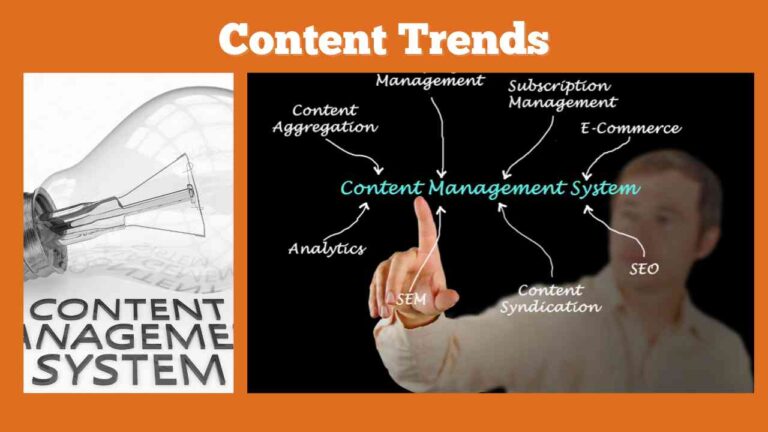Introduction
In a fast-paced digital world, staying ahead of the curve with the latest content trends is crucial for small business owners looking to make a mark.
From engaging video content to interactive storytelling, the top five content trends provide a roadmap for success in capturing the attention of a target audience.
But how can small business owners leverage these trends to elevate their brand and reach new heights in the competitive landscape?
Let’s embark on a journey together, uncovering the power of these cutting-edge content strategies that are poised to transform your business into a storytelling powerhouse.
Understanding Content Trends
Why Content Trends Matter
Content trends are more than just fleeting fads; they are a reflection of consumer behavior and preferences.
For small business owners, understanding these trends is vital because it directly influences how audiences engage with your brand.
When you align your content with what’s current and relevant, you create opportunities for your business to connect with customers on a deeper level.
It’s about being where your audience is and speaking their language.
Moreover, tapping into trends can help your content be discovered by new audiences, as platforms often prioritize trending topics in their algorithms.
Ultimately, staying updated with content trends can lead to increased visibility, engagement, and credibility for your business in a crowded online space.
The Role of Content in Small Businesses
In the digital age, content is the voice of a small business.
It’s the primary vehicle for sharing your story, showcasing your expertise, and building relationships with your customers.
For small businesses, content isn’t just about selling products or services; it’s about creating value for your audience.
Effective content can educate, entertain, and inspire people, which in turn fosters trust and loyalty.
It’s also a crucial tool for small business owners to differentiate themselves from competitors, highlighting what makes their brand unique.
Content can amplify your brand’s reach and impact by increasing visibility in search engine results, driving traffic to your website, and engaging users on social media.
Essentially, content is the cornerstone of any small business’s digital marketing strategy, empowering you to grow your brand and establish a solid online presence.
Top Five Content Trends for Small Businesses
Insight on Content Trend One
The first major content trend that small business owners must pay attention to is the rise of short-form video content.
Platforms like TikTok and Instagram Reels have revolutionized the way audiences consume content, with short, engaging videos becoming the norm.
This trend is driven by users’ decreasing attention spans and the desire for quick, digestible information.
For small businesses, this means an opportunity to showcase products, share quick tips, or tell your brand’s story in a format that is easy to produce and has the potential for high engagement.
By adopting short-form video content, small businesses can increase their reach, create more personal connections with their audience, and stay competitive in a market where video is becoming king.
Unpacking Content Trend Two
The second trend shaping the content landscape for small businesses is the emphasis on authenticity and storytelling.
Consumers are increasingly drawn to brands that share genuine stories and present their values transparently.
This shift is changing the way small businesses approach content creation, moving away from polished, corporate-style messages to more relatable, human-centered content.
Authentic storytelling allows small businesses to forge a strong emotional connection with their audience, differentiating themselves in a crowded marketplace.
It’s about sharing the journey of your business, including the challenges and triumphs, to build a community around your brand.
By embracing this trend, small businesses can create a loyal customer base that feels a personal investment in the success of the brand.
Understanding Content Trend Three
Content trend three revolves around interactive content, which has become a powerful tool for small businesses to increase user engagement and provide value.
Interactive content includes quizzes, polls, surveys, and interactive infographics that encourage active participation from the audience.
This type of content not only boosts engagement but also provides valuable insights into consumer preferences and behavior.
Small business owners can use this data to refine their marketing strategies and product offerings.
The key advantage of interactive content is its ability to transform passive viewers into active participants, creating a more immersive and memorable experience.
By integrating interactive elements into your content strategy, you can set your business apart and create a more dynamic connection with your audience.
Content Trend Four: What to Know
The fourth content trend that small business owners should be aware of is the growing importance of voice search optimization.
With the rise of virtual assistants like Siri, Alexa, and Google Assistant, more consumers are using voice commands to search for products and services online.
This trend requires a shift in the way content is crafted, focusing on natural language and question-based phrases that people are likely to use when speaking rather than typing.
For small businesses, this means optimizing content to appear in voice search results, which often provide users with immediate answers.
By incorporating voice search strategies into your content plan, your business can improve its online visibility and accessibility, making it easier for potential customers to find and engage with your brand through this increasingly popular medium.
The Impact of Content Trend Five
The fifth and final content trend is the use of data-driven content to hyper-personalize the user experience.
As small businesses have access to more data than ever before, leveraging this information to tailor content can significantly impact customer engagement and conversion rates.
Personalization extends beyond simply including a customer’s name in an email.
It involves analyzing user data to create content that resonates with individual preferences, behaviors, and pain points.
Small businesses that adopt this trend can deliver more relevant and compelling content, thereby increasing the effectiveness of their marketing efforts.
By understanding and implementing data-driven personalization, small businesses can ensure that their content stands out in a way that not only attracts attention but also fosters a sense of connection and loyalty among their audience.
How to Leverage Content Trends
Strategies to Utilize These Trends
To effectively utilize content trends, small business owners should start by identifying which trends align with their brand values and audience interests.
Once identified, integrate these trends into your content strategy by setting clear objectives for each piece of content.
For instance, if short-form videos are a good fit, consider creating a series of quick tips related to your industry.
If storytelling is your focus, share behind-the-scenes stories or customer testimonials that highlight your brand’s impact.
Additionally, experiment with different formats and platforms to see what resonates with your audience.
Use analytics to track engagement and adjust your approach accordingly.
Remember, the key is not to jump on every trend, but to select those that will authentically connect with your customers and enhance your brand’s message.
By doing so, you can create a content strategy that is both current and meaningful.
Navigating Challenges of Content Trends
Adapting to content trends presents challenges, such as staying current and ensuring that content is authentic to your brand.
To navigate these, small business owners should prioritize consistency and quality over quantity.
It’s better to produce less content that’s well-aligned with your brand than to chase every trend ineffectively.
When experimenting with new content types, start small and learn from both successes and failures.
Engage with your audience for feedback and monitor performance data closely to understand what works.
It’s also essential to maintain a flexible content strategy that allows for adjustments as trends evolve.
Lastly, consider collaborating with content creators who are experienced in these trends.
They can provide valuable insights and help you avoid common pitfalls, ensuring your content stays fresh and relevant.
Creating a Game Plan for Your Business
To effectively leverage content trends, small business owners need a strategic game plan.
Start by setting specific, measurable goals for your content, such as increasing website traffic or boosting engagement on social media.
Next, identify the trends that are most applicable to your niche and audience.
Allocate resources to create high-quality content that reflects these trends, ensuring it aligns with your brand’s voice and message.
It’s important to schedule regular reviews of your content strategy to adapt to changing trends and audience preferences.
Additionally, invest in tools and training that will keep you and your team up-to-date with the latest digital marketing skills.
By creating a structured plan that accommodates flexibility and growth, you can ensure that your business remains competitive and relevant in the ever-evolving landscape of content marketing.







